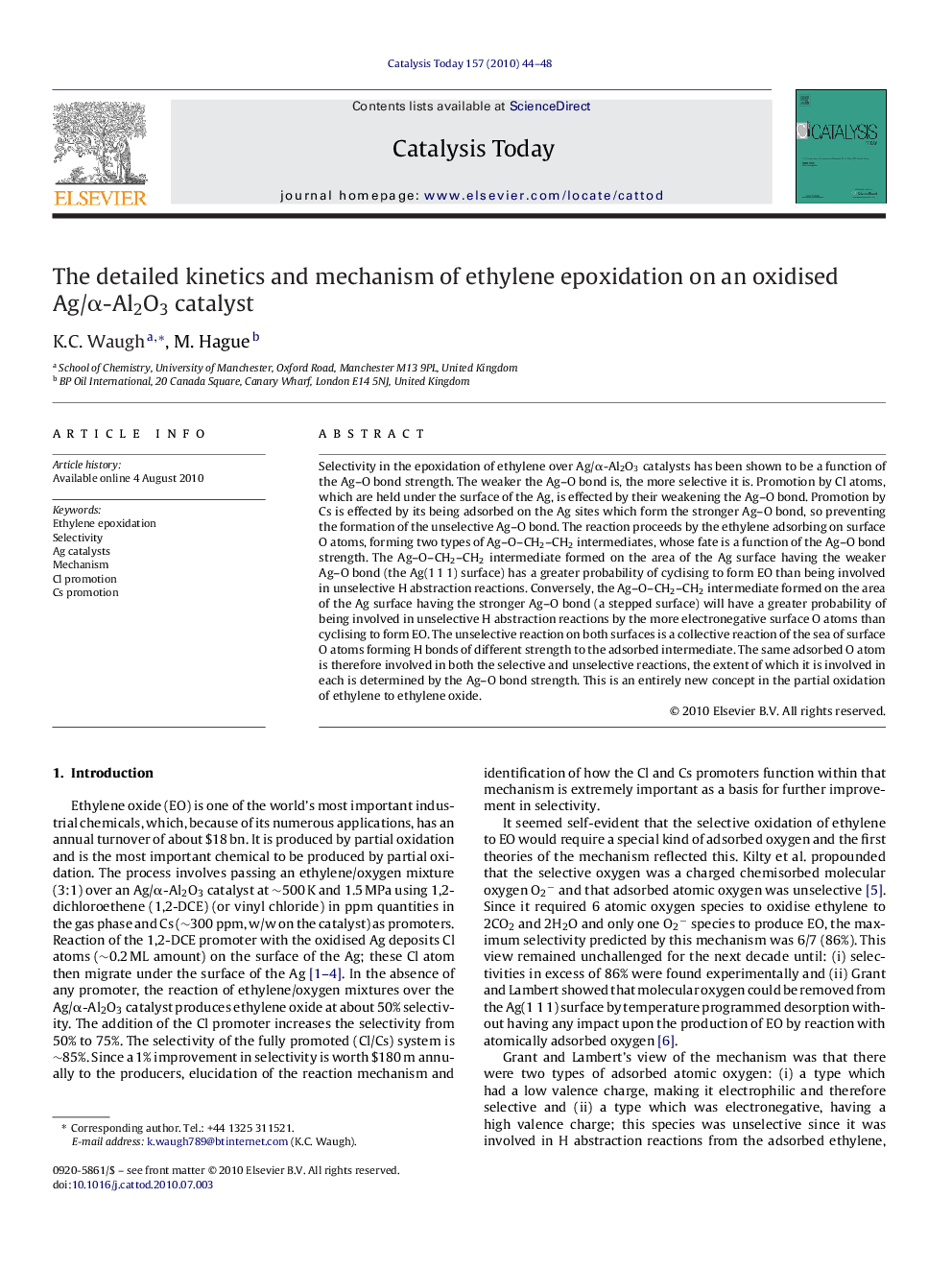| Article ID | Journal | Published Year | Pages | File Type |
|---|---|---|---|---|
| 56193 | Catalysis Today | 2010 | 5 Pages |
Selectivity in the epoxidation of ethylene over Ag/α-Al2O3 catalysts has been shown to be a function of the Ag–O bond strength. The weaker the Ag–O bond is, the more selective it is. Promotion by Cl atoms, which are held under the surface of the Ag, is effected by their weakening the Ag–O bond. Promotion by Cs is effected by its being adsorbed on the Ag sites which form the stronger Ag–O bond, so preventing the formation of the unselective Ag–O bond. The reaction proceeds by the ethylene adsorbing on surface O atoms, forming two types of Ag–O–CH2–CH2 intermediates, whose fate is a function of the Ag–O bond strength. The Ag–O–CH2–CH2 intermediate formed on the area of the Ag surface having the weaker Ag–O bond (the Ag(1 1 1) surface) has a greater probability of cyclising to form EO than being involved in unselective H abstraction reactions. Conversely, the Ag–O–CH2–CH2 intermediate formed on the area of the Ag surface having the stronger Ag–O bond (a stepped surface) will have a greater probability of being involved in unselective H abstraction reactions by the more electronegative surface O atoms than cyclising to form EO. The unselective reaction on both surfaces is a collective reaction of the sea of surface O atoms forming H bonds of different strength to the adsorbed intermediate. The same adsorbed O atom is therefore involved in both the selective and unselective reactions, the extent of which it is involved in each is determined by the Ag–O bond strength. This is an entirely new concept in the partial oxidation of ethylene to ethylene oxide.
